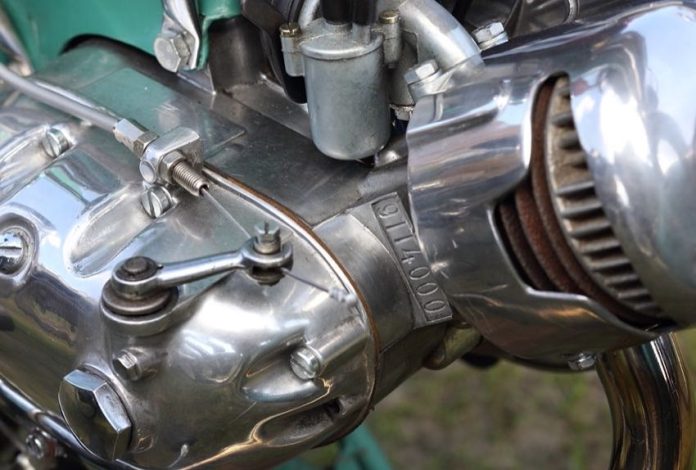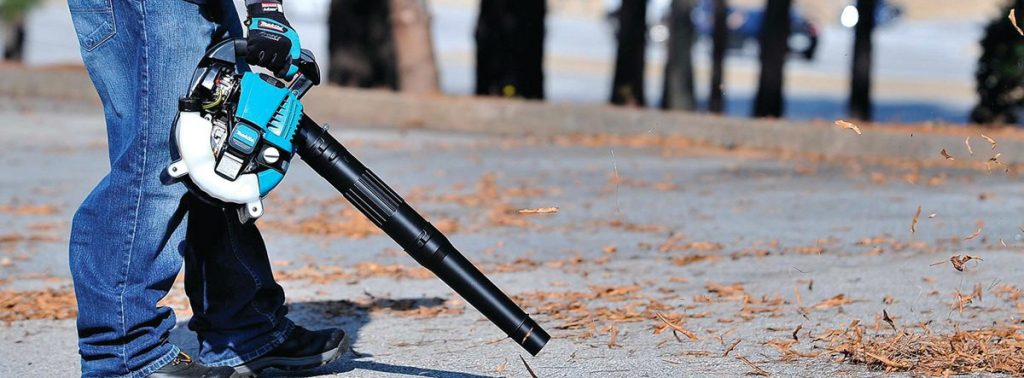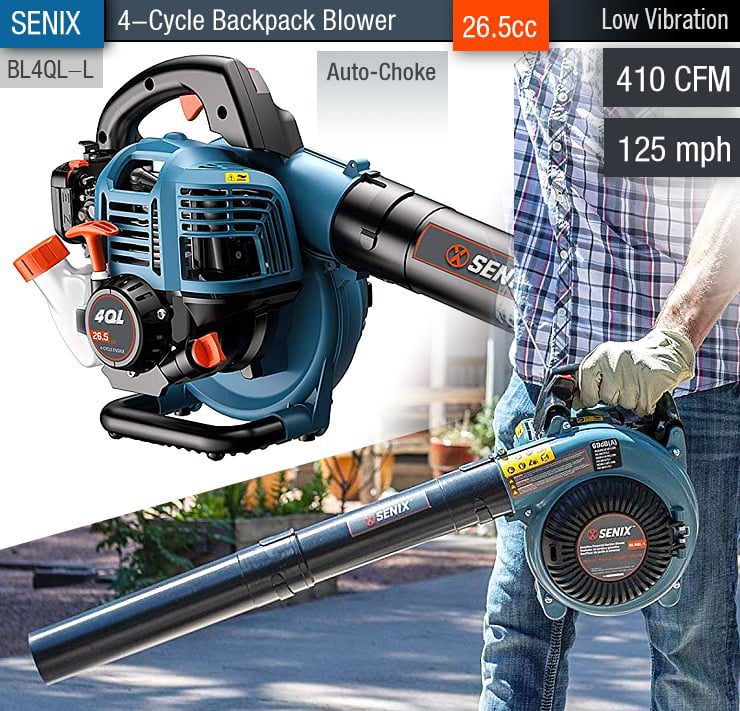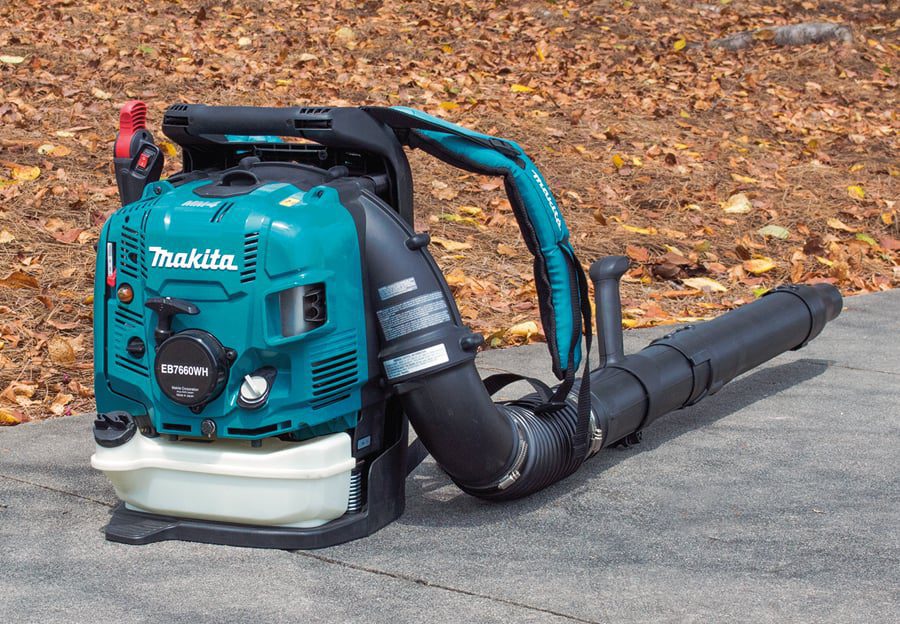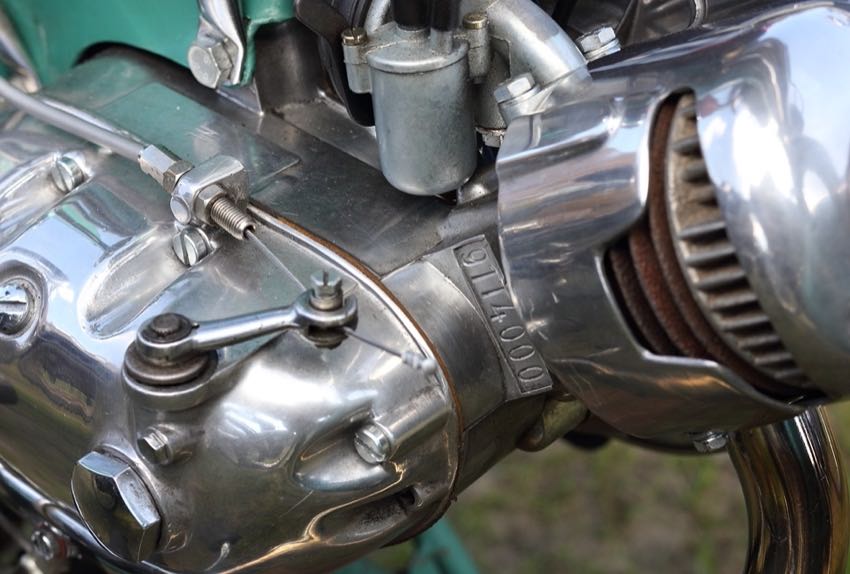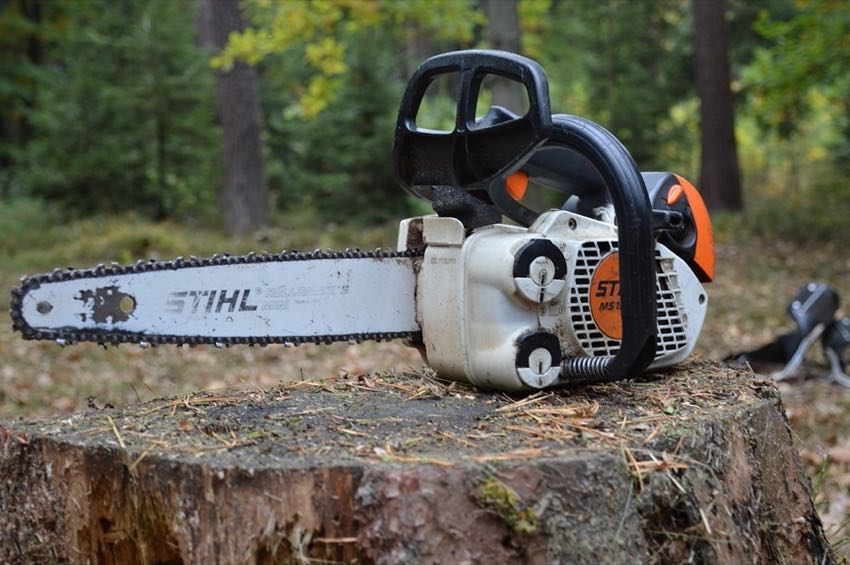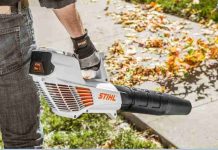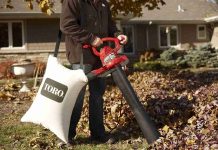In today’s article, we explore the age-old debate that has divided leaf-blower enthusiasts for years: what’s better, the 2-stroke or the 4-stroke leaf blower? We all know the struggle of keeping our outdoor spaces clean and pristine, but choosing the right tool for the job can be a daunting task. So, let’s dive right into the world of leaf blowers and uncover the pros and cons of the 2-stroke and 4-stroke options. Whether you’re a seasoned gardener or just starting to explore the world of yard maintenance, this article will provide you with all the information you need to make an informed decision.
Introduction
Welcome to our comprehensive guide on leaf blowers! Whether you’re a homeowner looking to keep your yard tidy or a professional landscaper in need of a powerful tool, leaf blowers are essential equipment for clearing leaves and debris. In this article, we will provide an overview of leaf blowers, compare the two main types – two-stroke and four-stroke leaf blowers, discuss their performance and power, maintenance and convenience, environmental impact, cost and value, and consider their application and user considerations. By the end, you’ll have a clear understanding of which leaf blower is the best fit for your needs.
Overview of Leaf Blowers
Definition
Leaf blowers are mechanical devices used to clear fallen leaves and debris from outdoor surfaces, such as lawns, driveways, and sidewalks. They utilize forced air to blow leaves into piles or out of the way, making cleanup a breeze.
Purpose
The primary purpose of a leaf blower is to save time and effort when it comes to yard maintenance. Instead of manually raking or sweeping leaves, a leaf blower allows you to quickly and efficiently gather them into piles or blow them away entirely.
Types
Leaf blowers typically come in two main types: two-stroke and four-stroke. These distinctions refer to the internal combustion engines used in the leaf blowers and have a significant impact on their performance and functionality.
Comparison
Before diving deeper into the two-stroke and four-stroke leaf blowers, let’s compare them in terms of their working principles, advantages, disadvantages, and best use cases.
This image is property of www.leafblowersdirect.com.
Two-Stroke Leaf Blowers
Working Principle
Two-stroke leaf blowers use a simpler engine design than their four-stroke counterparts. They rely on a two-part combustion cycle, where the compression and power strokes are combined into a single movement of the piston. This design reduces the weight and complexity of the engine.
Advantages
Two-stroke leaf blowers have a few notable advantages. Firstly, they are generally more lightweight and compact, making them easier to handle and maneuver. They also tend to provide higher power-to-weight ratios and are highly portable, allowing for greater mobility during use. Additionally, two-stroke engines are typically less expensive to purchase upfront.
Disadvantages
While two-stroke leaf blowers offer some advantages, they also have a few drawbacks. One significant disadvantage is their higher noise levels, which may be a concern if you live in a noise-sensitive neighborhood or prefer a quieter working environment. Another disadvantage is their higher emissions, as two-stroke engines tend to produce more pollutants than four-stroke engines. Additionally, since two-stroke engines require a fuel-oil mixture for operation, users must handle fuel mixing, adding an extra step to the maintenance process.
Best Use Cases
Two-stroke leaf blowers are well-suited for small to medium-sized yards or for light commercial use. Their portability makes them ideal for quick and easy tasks, such as clearing leaves from sidewalks, driveways, or smaller lawns. They are a popular choice for homeowners and individuals who prioritize convenience and efficiency over noise levels or emissions.
Four-Stroke Leaf Blowers
Working Principle
Unlike two-stroke leaf blowers, four-stroke leaf blowers have a more complex engine design. They use separate strokes for intake, compression, combustion, and exhaust, resulting in improved efficiency and reduced emissions.
Advantages
Four-stroke leaf blowers offer several advantages worth considering. Firstly, they tend to be quieter compared to their two-stroke counterparts, providing a more peaceful and comfortable working environment. Additionally, four-stroke engines produce lower emissions, making them a more environmentally-friendly option. They also do not require a fuel-oil mixture, eliminating the need for fuel mixing during maintenance. Furthermore, four-stroke engines typically provide better fuel efficiency, resulting in longer run times between refueling.
Disadvantages
Despite their advantages, four-stroke leaf blowers do have a few drawbacks. One primary disadvantage is their larger size and weight, which may make them less maneuverable and more difficult to handle, especially for extended periods. Another consideration is the higher initial purchase cost compared to two-stroke leaf blowers. However, the improved efficiency and durability may contribute to their long-term value.
Best Use Cases
Four-stroke leaf blowers are well-suited for larger yards or heavy-duty commercial use. Their powerful engines and longer run times make them ideal for tackling large piles of leaves or debris. They are particularly popular among professional landscapers and individuals who prioritize quieter operation and reduced emissions.
This image is property of www.chainsawjournal.com.
Performance and Power
Engine Efficiency
When it comes to leaf blowers, engine efficiency is a key factor to consider. While both two-stroke and four-stroke leaf blowers have their strengths, the four-stroke engines generally offer higher efficiency. Their separate intake and compression strokes allow for better fuel-air mixture control, resulting in more efficient combustion and reduced fuel consumption.
Air Volume and Velocity
The performance of leaf blowers is measured in terms of air volume and velocity. Air volume refers to the amount of air the blower can move in a given amount of time, usually measured in cubic feet per minute (CFM). Air velocity, on the other hand, measures the speed at which the air is expelled from the blower, typically in miles per hour (MPH). Both factors play a crucial role in determining the blowing power and effectiveness of the leaf blower. While two-stroke leaf blowers often provide higher air velocity, four-stroke blowers excel in air volume, allowing for more efficient leaf movement and debris clearing.
Noise and Emissions
Another important consideration is the noise and emissions produced by the leaf blower. As previously mentioned, two-stroke leaf blowers tend to be louder and produce more emissions compared to four-stroke leaf blowers. The noise levels and emissions of a leaf blower will depend on various factors, including the specific model and engine design. If noise pollution or environmental impact is a concern for you, opting for a four-stroke leaf blower is recommended.
Fuel Consumption
Fuel consumption is a vital aspect to consider, particularly if you expect to use your leaf blower frequently or for extended periods. Four-stroke leaf blowers generally offer better fuel efficiency, allowing for longer run times between refueling. This can be advantageous, as it reduces interruptions during tasks and minimizes the need to carry additional fuel.
Maintenance and Convenience
Fuel Mixing
One significant difference between two-stroke and four-stroke leaf blowers is the fuel mixing requirement. Two-stroke leaf blowers use a fuel-oil mixture, typically with a specific oil-to-gas ratio, that needs to be mixed before refueling. This process can be time-consuming and may require additional attention to ensure the correct ratio is achieved. On the other hand, four-stroke leaf blowers use standard gasoline, eliminating the need for fuel mixing and simplifying the refueling process.
Oil Lubrication
Both two-stroke and four-stroke leaf blowers require oil lubrication, but the frequency and method of oil application differ. Two-stroke leaf blowers usually require oil to be mixed with the fuel, serving both as a lubricant and combustion aid. In contrast, four-stroke leaf blowers have a separate oil reservoir and utilize oil-only, similar to a car engine. This distinction means that four-stroke blowers require periodic oil changes and regular maintenance, similar to a vehicle.
Starting Process
The starting process can significantly impact the convenience and ease of use of a leaf blower. Two-stroke leaf blowers are generally known for their simple starting process, often requiring a couple of pulls on the starter cord to ignite. Four-stroke leaf blowers may have additional starting mechanisms, such as a recoil starter or an electric starter, which can make the starting process slightly more involved. However, advancements in technology have made starting four-stroke blowers increasingly effortless.
User Maneuverability
User maneuverability is an important consideration, especially if you anticipate using the leaf blower for extended periods or tackling more challenging terrain. The weight and size of the leaf blower will impact its maneuverability. Two-stroke leaf blowers are typically more compact and lightweight, making them easier to handle and maneuver. Conversely, four-stroke leaf blowers tend to be larger and heavier, which may require more effort during operation. If maneuverability is a priority, opting for a lightweight model or considering additional features like ergonomic handles can provide added comfort and convenience.
This image is property of www.chainsawjournal.com.
Environmental Impact
Emissions Standards
As awareness of environmental impact increases, emissions standards for leaf blowers have become more stringent. Both two-stroke and four-stroke leaf blowers must comply with these standards, but four-stroke leaf blowers generally produce lower emissions. Ensuring your leaf blower meets the applicable emissions standards is essential to minimize air pollution and contribute to a healthier environment.
Pollution Considerations
When comparing the environmental impact of leaf blowers, it’s important to consider the potential sources of pollution. Two-stroke leaf blowers, with their fuel-oil mixture and higher emissions, can contribute to air pollution and release harmful pollutants into the atmosphere. Four-stroke leaf blowers, on the other hand, produce lower emissions and can help reduce pollution. Additionally, choosing a leaf blower with low exhaust emissions and using proper fuel mixing techniques can further mitigate pollution concerns.
Noise Pollution
Aside from air pollution, leaf blowers can also contribute to noise pollution. Two-stroke leaf blowers often operate at higher noise levels compared to four-stroke leaf blowers. While noise pollution regulations may vary by location, selecting a leaf blower with lower noise levels can minimize disruptions and be considerate of the surrounding environment and neighbors.
Cost and Value
Initial Purchase Cost
The cost of a leaf blower is a significant factor to consider for any buyer. In general, two-stroke leaf blowers tend to be less expensive to purchase upfront compared to four-stroke leaf blowers. The price difference can stem from the complexity and additional components present in four-stroke engines. However, it’s important to weigh the initial purchase cost against the long-term value, efficiency, and durability.
Operating Costs
In addition to the initial purchase cost, it’s essential to consider the operational expenses associated with a leaf blower. Both two-stroke and four-stroke leaf blowers require fuel and periodic maintenance. However, two-stroke engines may require purchasing and mixing fuel and oil separately, while four-stroke engines typically only require standard gasoline. Additionally, four-stroke engines generally offer better fuel efficiency, meaning lower fuel consumption and reduced operating costs over time.
Longevity and Durability
The overall longevity and durability of a leaf blower can significantly impact its value. Two-stroke leaf blowers are often perceived as less durable due to their simpler design and higher engine speeds. Four-stroke leaf blowers, with their more robust construction and lower engine speeds, may offer higher longevity and durability. Ensuring proper maintenance and following manufacturer guidelines can help extend the lifespan of any leaf blower, regardless of the engine type.
This image is property of www.protoolreviews.com.
Application and User Considerations
Residential Use
If you plan on using a leaf blower for residential purposes, several factors come into play. Consider the size of your yard and the specific tasks you need to accomplish. Two-stroke leaf blowers are generally more than sufficient for standard residential yards and can provide quick and convenient leaf clearance. However, if you have a larger property or frequently deal with heavy debris, a four-stroke leaf blower may better suit your needs, providing more power, efficiency, and longer run times.
Professional Use
For professional landscapers or individuals in the landscaping industry, the demands placed on a leaf blower may be more rigorous. Four-stroke leaf blowers are often the go-to choice for professionals due to their higher power, improved efficiency, and longer operation times. They can handle larger areas and substantial debris, making them well-suited for heavy-duty commercial use.
Skill Level
When considering a leaf blower, it’s essential to assess your skill level and comfort with operating such equipment. Two-stroke leaf blowers are generally considered more user-friendly, with simpler start-up processes and easier maneuverability. If you’re a beginner or prefer a no-fuss approach, a two-stroke leaf blower may be the better choice. However, with practice and familiarity, users of any skill level can operate both types effectively.
Personal Preferences
Ultimately, personal preferences also play a role in selecting the right leaf blower. Consider your priorities, such as noise levels, emissions, and ease of maintenance, and how they align with your values and needs. Additionally, factors like brand reputation, warranty offerings, and customer reviews can provide insights into reliability, customer satisfaction, and overall value.
Final Verdict
After examining the various aspects of two-stroke and four-stroke leaf blowers, there is no definitive answer to which is better. Both types have their strengths and weaknesses, making them suitable for different use cases and individual preferences. Two-stroke leaf blowers offer convenience, portability, and cost-effectiveness, while four-stroke leaf blowers excel in power, efficiency, and reduced emissions. Ultimately, the best choice depends on your specific needs, such as yard size, complexity of tasks, noise restrictions, and environmental concerns. By carefully considering these factors, you can make an informed decision and find the leaf blower that best suits your requirements. Happy leaf blowing!
This image is property of opereviews.com.

